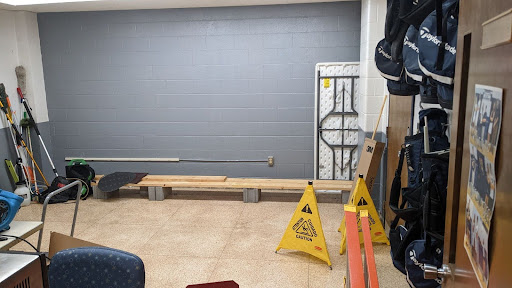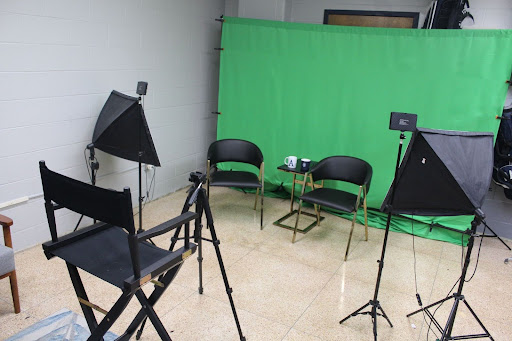Teachers have a toolbox they utilize everyday. You will not find screwdrivers and hammers in a teacher’s toolbox. In a teacher’s toolbox, you will find numerous resources ranging from Kahoots to Khan Academy to Nearpod and ChatGPT. The physical tools found in a teacher’s toolbox could include art and craft supplies, virtual reality goggles, algebra tiles and so much more. Depending on the subject and age taught, a teacher’s toolbox will be vast. Hidden in the bottom of this toolbox is something that can help create an exponential amount of new tools. A struggle many teachers face is having enough classroom dollars or the funds to help bring their ideas to life. Teachers are great at thinking big and outside the box to help their students learn. However, budgets can be thin in many school corporations and not having the financial resources can hinder a teacher’s potential. A hidden tool that can open up a lot of new opportunities for teachers is the tool of grant writing.
“Being able to write grants can allow a teacher to expand their resources and grow their toolbox.”
Being able to write grants can allow a teacher to expand their resources and grow their toolbox. I teach at a small private high school (40-50 students per grade level). Our budget is not the biggest, but I have had numerous ideas over my first couple years teaching here to create a positive learning impact with my students. When I realized we didn’t have the funds to purchase what I was wanting to create, I turned to grants. I started searching for potential grants and learning how to write them. As a teacher, I will say writing grants is quite a bit different than the writing I am used to doing or grading. Seeking out teachers and administrators who have been successful in receiving grants in the past became my mentors in helping me learn. After numerous discussions, I felt I was ready to write my first grant.
I teach a student media class where the main focus is creating the school’s yearbook. However, being a media class, I wanted the class to also learn about other forms of media. We had a couple old cameras that did video recording, so we decided to create our own student-ran video newscast. The students loved it! I brought some local talent in to talk about how to create quality content and the kids wanted more. I realized we had a need for more physical resources for students to use to increase their capabilities. After a discussion with our principal, I received the go ahead to convert an old unused office in our basement into a video studio. My first grant idea came to fruition. I wrote a grant requesting money for a better quality video camera, a green screen, light towers, wireless microphones and a stipend to purchase some furniture for the room. My writing was successful! We received money to convert our old office into a video studio. An art student painted a mural on the wall opposite the side of the green screen to provide a backdrop that can be used in different videos. This room has not only been used by my Student Media class, but now gets used by students in a variety of classes when doing projects where they create videos. This has been a successful example from receiving grant dollars.

*Before as an unused office

*After – 2 areas to do different types of video projects

*After – 2 areas to do different types of video projects
Many teachers avoid grant writing because they think of the time put into it and the thought of not receiving anything that results in that time essentially being wasted. These are valid thoughts, but a focus on writing grants properly will eventually lead to a successful grant. A few key tips for writing grants include brainstorming. You don’t want to just dive in when writing a grant. You need to be sure you have all your thoughts laid out. When doing the brainstorming session, a main focus should be on getting everything from in your head onto paper. You need to realize that the people who read about your grant have no idea about anything with your school and plans. It is easy to gloss over or skip things you think are small in relation to the overall picture, but those minor details go a long way in helping someone else understand your plan.
When you go to write a grant, your main thought should be on being specific. You want to be as specific and detailed as possible as you complete the grant form. Use the thoughts you put down in your brainstorming session to guide you. Don’t leave any stone unturned if possible. Being specific will help those who are reading your grant envision your project and quite possibly view your project from your own perspective. That would be your greatest accomplishment as a grant writer.
Over my two years with my current school, I have had numerous successful grants that have changed the way I teach. Besides the media room, other grants I have received allowed me to purchase a set of virtual reality goggles, purchase a new professional gimbal stabilizer and photography camera, allowed me to pay a professional videographer to help create a professional quality video with my Student Media class. I also assisted students doing a capstone project in receiving money from multiple grants to build and stock a greenhouse on property.
Thanks to the grant dollars that I, along with other teachers at my school have received, we have been able to expand our teacher toolbox and provide new and engaging ways for students to interact and learn. Many teachers keep their grant writing tool buried in their toolbox because it does take some time with no guarantees. However, I suggest you dig that tool out, polish it up, share it with colleagues and see the way it can transform your classroom, and ultimately, your students.
Resources
Please login or register to claim PGPs.
Alternatively, you may use the PGP Request Form if you prefer to not register an account.



